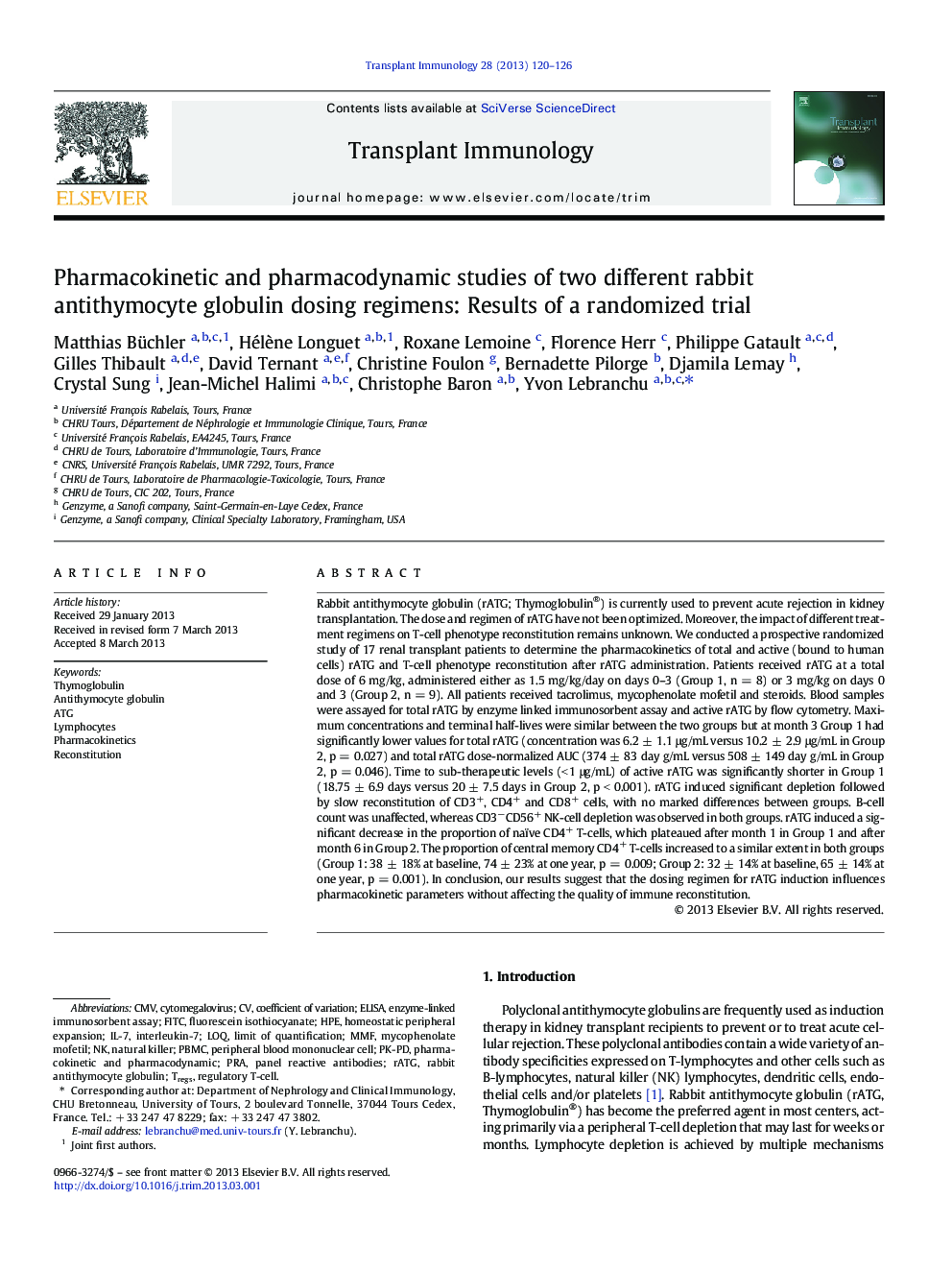| Article ID | Journal | Published Year | Pages | File Type |
|---|---|---|---|---|
| 3392160 | Transplant Immunology | 2013 | 7 Pages |
•17 transplant patients randomized to two antithymocyte globulin (rATG) regimens.•rATG pharmacokinetics showed some significant differences after day 7.•rATG depleted CD3+, CD4+ and CD8+ cells and impaired their reconstitution.•Lymphocyte depletion was similar between groups.•Proportions of naïve, central memory and regulatory CD4+ T-cells were also similar.
Rabbit antithymocyte globulin (rATG; Thymoglobulin®) is currently used to prevent acute rejection in kidney transplantation. The dose and regimen of rATG have not been optimized. Moreover, the impact of different treatment regimens on T-cell phenotype reconstitution remains unknown. We conducted a prospective randomized study of 17 renal transplant patients to determine the pharmacokinetics of total and active (bound to human cells) rATG and T-cell phenotype reconstitution after rATG administration. Patients received rATG at a total dose of 6 mg/kg, administered either as 1.5 mg/kg/day on days 0–3 (Group 1, n = 8) or 3 mg/kg on days 0 and 3 (Group 2, n = 9). All patients received tacrolimus, mycophenolate mofetil and steroids. Blood samples were assayed for total rATG by enzyme linked immunosorbent assay and active rATG by flow cytometry. Maximum concentrations and terminal half-lives were similar between the two groups but at month 3 Group 1 had significantly lower values for total rATG (concentration was 6.2 ± 1.1 μg/mL versus 10.2 ± 2.9 μg/mL in Group 2, p = 0.027) and total rATG dose-normalized AUC (374 ± 83 day g/mL versus 508 ± 149 day g/mL in Group 2, p = 0.046). Time to sub-therapeutic levels (< 1 μg/mL) of active rATG was significantly shorter in Group 1 (18.75 ± 6.9 days versus 20 ± 7.5 days in Group 2, p < 0.001). rATG induced significant depletion followed by slow reconstitution of CD3+, CD4+ and CD8+ cells, with no marked differences between groups. B-cell count was unaffected, whereas CD3−CD56+ NK-cell depletion was observed in both groups. rATG induced a significant decrease in the proportion of naïve CD4+ T-cells, which plateaued after month 1 in Group 1 and after month 6 in Group 2. The proportion of central memory CD4+ T-cells increased to a similar extent in both groups (Group 1: 38 ± 18% at baseline, 74 ± 23% at one year, p = 0.009; Group 2: 32 ± 14% at baseline, 65 ± 14% at one year, p = 0.001). In conclusion, our results suggest that the dosing regimen for rATG induction influences pharmacokinetic parameters without affecting the quality of immune reconstitution.
